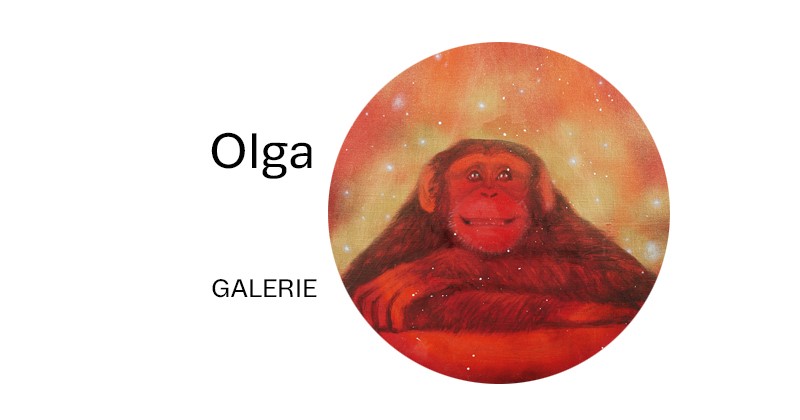
Accompanying text: Zuzana Krišková
VĚRA NOVÁKOVÁ *1928
She is a Czech painter, illustrator and sculptor. From 1947 to 1949 she studied at the Academy of Fine Arts in Prague in the studio of monumental painting. She was expelled for political reasons. Only in 1991, together with Pavel Brázda, she had her first large exhibition of paintings from the 1950s at the PKC Ženské domovy. In 1992 Věra Nováková and Pavel Brázda acquired their first studio, where Věra still works today.
ZUZANA KRIŠKOVÁ (accompanying text) *1989
She is an art historian and publicist. She studied art history at the Faculty of Arts, Charles University. She currently works at the Research Department of the Academy of Fine Arts in Prague.
The life and work of the painter Věra Nováková (*1928) were strongly influenced by an event that happened right at the beginning of her artistic career. Together with her life partner Pavel Brázda, she was expelled from the Academy of Fine Arts, where she studied for several semesters in Vladimír Sychra's painting studio, without any reason, probably as an exemplary case, during the political vetting in 1949. For the young girl, who until then had been in a harmonious, intellectual family environment, this intervention from above was an incomprehensible injustice with which she had to deal internally for many years. In the cultural-political system of the time, involuntary graduation from art school meant a practical impossibility to embark on a career as an artist and the necessity to take up a regular job. A person without an art degree was not entitled to his or her own studio, could not exhibit, and thus could not participate in public art life in any way. Věra Nováková thus involuntarily found herself in the role of an outsider with her hands tied, without direct contact with the art scene. Nevertheless, she did not give up on her work, and even if sporadically, she continued to paint in the cloister of her apartment. At first, she found solace in realistic, existential paintings and drawings, expressively close to the work of Pavel Brázda. The bleakness of life was reflected in her canvases, in which, under the influence of political developments, Nováková saw little hope for moral survival. The difficult situation in her life and her efforts to find a way to reconcile with the world led her to faith in God. In the future, Christian iconography would dominate the subjects of her paintings. Over the years, specific biblical figures and stories will be transformed into contemplative canvases full of play with basic shapes, letters, but also spirituality and cosmological overlaps. The search for the order of things and harmony, the questioning of the meaning of human existence and human action are also part of the works exhibited here. The leitmotif is the installation In Infinite Space (2013). A tightrope walker balances on a thin wire in the infinite cosmic space. Even he himself is made up of lying figure eights, an abstract mathematical sign denoting something our minds cannot imagine. A symbolic figure in a symbolic environment refers to the diversity of life's possibilities, the unpredictability of the future and the irreversibility of the past. The imaginary balancing act with the constant threat of falling into the dark depths is built up here as a threat but also a comfort at the same time. No one knows what would happen after the fall. Will the tightrope walker float in a vacuum or will he plummet into the abyss? The infinite is imaginary, as are our ideas about it, as are our visions, wishes, dreams and desires. We can confine them with barriers, as we do our thinking, or we can let them spread freely into space, as the chimpanzee does in the painting Vision (2013). The drawing Into Space (1959-1990), a study for the painting of the same name, illustrates the limitless span of the human imagination, which extends beyond its original scope, that is, from planet Earth. Věra Nováková has maintained an optimistic vision of the world despite the difficult fate of her life, thanks to her faith in God and man. She asks questions that do not have a clear answer, and therefore forces us to think and to ask ourselves introspectively. Despite the fact that during her most productive years she was prevented from taking an active part in the cultural scene in the then Czechoslovakia, her work does not fall out of the contemporary climate, even though it developed independently of it along its own axis.
Zuzana Krišková